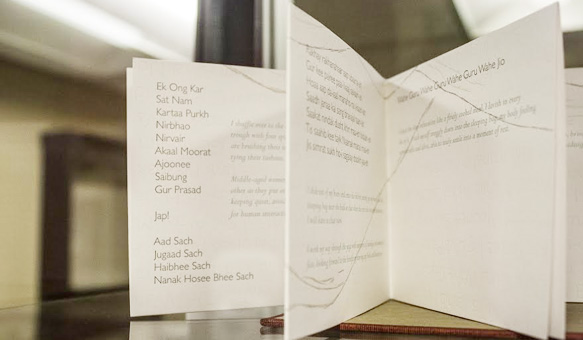A handful of UA students go a step further and make books themselves as part of the University’s Master of Fine Arts program in book arts. The students’ work will be on display on the fifth floor of Gorgas Library until Feb. 22.
When the University’s book arts program was established in the late 1970s, it was the first of its kind in the country. Housed on the fifth floor of Gorgas Library, the program is run through the school of library and information studies in the College of Communication and Information Sciences.
Steve Miller, a book arts professor and the MFA program coordinator, said the process of making a book is about more than the object itself.
“It really is a kind of human artifact when it’s done,” he said. “The kind of books that are made by hand here seem like the ones that are going to last for a very, very long time when most books sort of disappear and get digitized.”
Miller said some students are working to make their books available online. Regardless of the final product, much of the program is focused on something else.
“For me it’s the process, the collaboration, the challenges, the prevailing when things go south, and then it’s done, and I never look back,” he said. “I’m always on to the next thing and the next set of problems.”
Miller said the University’s library school emphasizes the connection between the book arts and library sciences programs. Both programs are housed on the fifth floor of Gorgas and students in both programs are able to collaborate and learn from each other.
“These library school students are always affected by going into the studios, mixing it up with book arts students, taking my paper-making class,” he said. “I’ve got two of them in there right now and they’re having the time of their lives.”
Book arts students can choose to concentrate on printing and publishing, bookbinding or the whole book. Miller said most students are interested in the entire process, but a few students every year are attracted to one aspect of the program. He and Anna Embree, another professor in the program, work to help students find their path and guide them along it.
Miller said the program and graduate school as a whole are often about more than the course of study. He said most students in book arts are from out of state and they have to confront where they are in their lives as well as their work.
“You’re also investigating your own creativity, your own intentions – you’re questioning and doubting sometimes,” he said. “Hopefully through building and making, people are building their self-confidence.”
Charlie Westerink, a graduate student in the book arts program, said after a few years studying philosophy he realized what he loved most were the old books. After spending so long dealing with the abstract, book arts were a way to deal in the concrete, he said.
“When I looked at the state of academia, I realized I didn’t want to regurgitate this stuff to people who frankly don’t care,” he said. “I’d much rather be involved in the books and physical objects rather than trafficking in abstract ideas.”
Emma Sovich, another student in the program, chose the University because of its connection with the creative writing programs. After working in publishing for a couple years, she came back to school to study poetry, which she said fits well with book arts.
“I print my own poetry, which isn’t every writer’s dream, but you love seeing your words in print,” she said. “As someone who’s had a very difficult time choosing between writing and art, this is a fabulous way to bring both of those together.”









